Egyptian Rue,Ruda,herb-of-grace,פיגם מצוי
| Scientific name: | Ruta chalepensis L. | |
| Synonym name: | Ruta bracteosa DC., Ruta angustifolia | |
| Common name: | Fringed rue, herb-of-grace, Citronelle Marron, Egyptian Rue, Ruda | |
| Hebrew name: | פיגם מצוי | |
| Arabic name: | السذاب المهدب | |
| Family: | Rutaceae, פיגמיים |
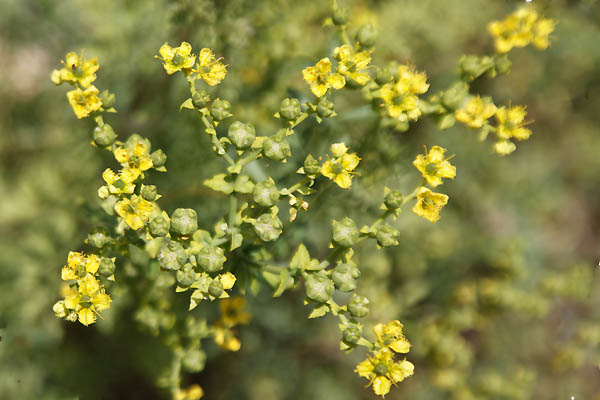
|
| Life form: | Chamaephyte | |
| Stems: | 60-80 cm tall | |
| Leaves: | Alternate, compound, bipinnate or more | |
| Flowers: | Loose cymose clusters of yellow | |
| Fruits / pods: | capsule, opening at tip, occasionally indehiscent, 4–5 lobed, leathery; lobes 7–8 mm long, tips pointed; seed, angled, tubercled, ± brown | |
| Flowering Period: | February, March, April, May, June | |
| Habitat: | Mediterranean maquis and forest | |
| Distribution: | The Mediterranean Woodlands and Shrublands, Semi-steppe shrublands | |
| Chorotype, טיפוס התפוצה: | Mediterranean | |
| Summer shedding: | Perennating |
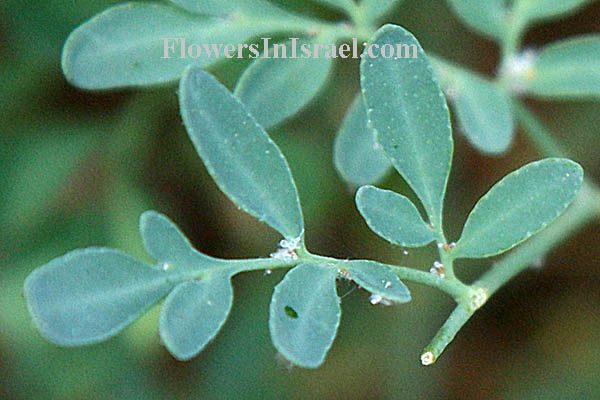
Derivation of the botanical name: Ruta (Latin), borrowed from Greek rhyte [ῥυτή].The origine of the (originally Greek) name Ruta is unknown. Ruta may derive from the Greek 'rhutos', "shielded," in view of its long history as an antidote. chalepensis, of or from Aleppo in northwestern Syria. The Hebrew name פיגם, Pigam from Greek peganon; often post-biblically as pigam, closely cognate with the Arabic fegam. Pigam appears in the Mishnah, Kil'ayim ( prohibitions) A 8 "They may not graft rue on white cassia, since that is [grafting] a vegetable on a tree" (A rue is a shrub, which falls in the vegetable family (according to rabbinic classification, of course) and a white cassia is a tree. Thus grafting the two together is prohibited.
In the Old Testament Rue is not taxed, it may be that even though it was used in the kitchen, it was cultivated from the wild. In Jesus' time it was grown in gardens and thus subject of tithe. Flavonoids, in particular Rutin, that reduce capillary fragility, is found in rue. Skin allergies due to brushing against Rue in the garden on sunny days are very common, for Rue is classified as a photosensitizer which means the sun is necessary for the skin to be bothered. Ruta chalepensis has always been regarded as protective; it was one of the 65 ingredients of Mithridate, a semi-mythical remedy, used as an antidote for poisoning, and said to be created by Mithridates VI of Pontus (132–63 BCE). In ancient Greece and Egypt, rue was used to stimulate menstrual bleeding, to induce abortion, and to strenghten the eyesight. See the list of Medicinal herbs in Israel, the parts used and their medical uses to treat various diseases. H.B.Tristram (1822-1906) writes: "Rue was formerly considered of great value as a disinfectant, and was consequently scattered in courts of justice to protect the officials from the terrible gaol fever. The custom has still continued in capital cases when sentence is passed." Ophelia in William Shakespeare's Hamlet (IV.5): "There's fennel for you, and columbines: there's rue for you; and here's some for me: we may call it herb-grace o' Sundays: O you must wear your rue with a difference..." Bible resources:
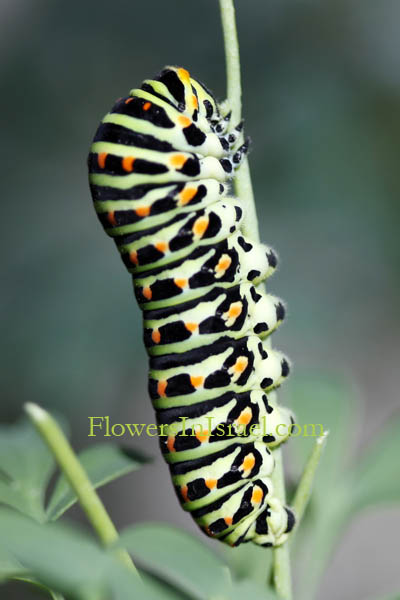
Location: my garden; Date Picture Taken: December 2, 2009 Papilio machaon caterpillar In Israel the caterpillar feeds on plants such as Ruta chalepensis and Foeniculum vulgare. 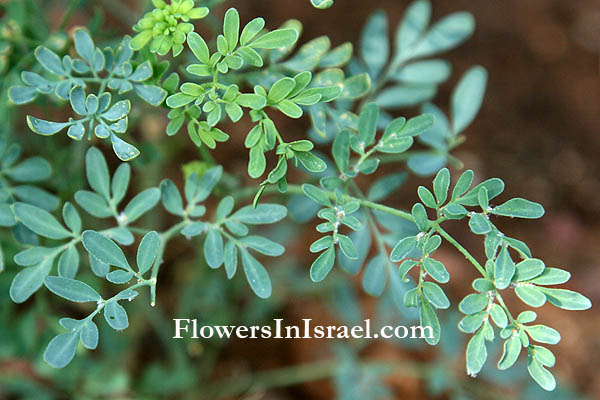
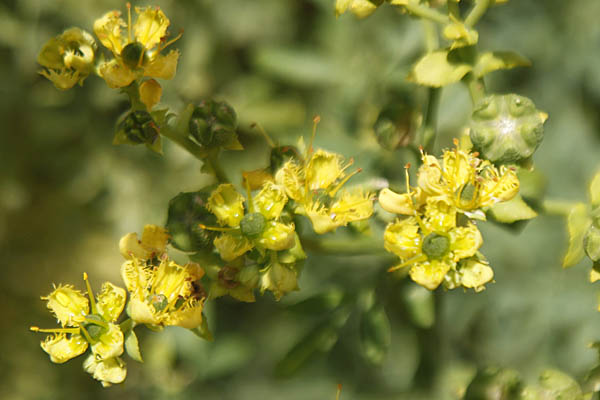
|